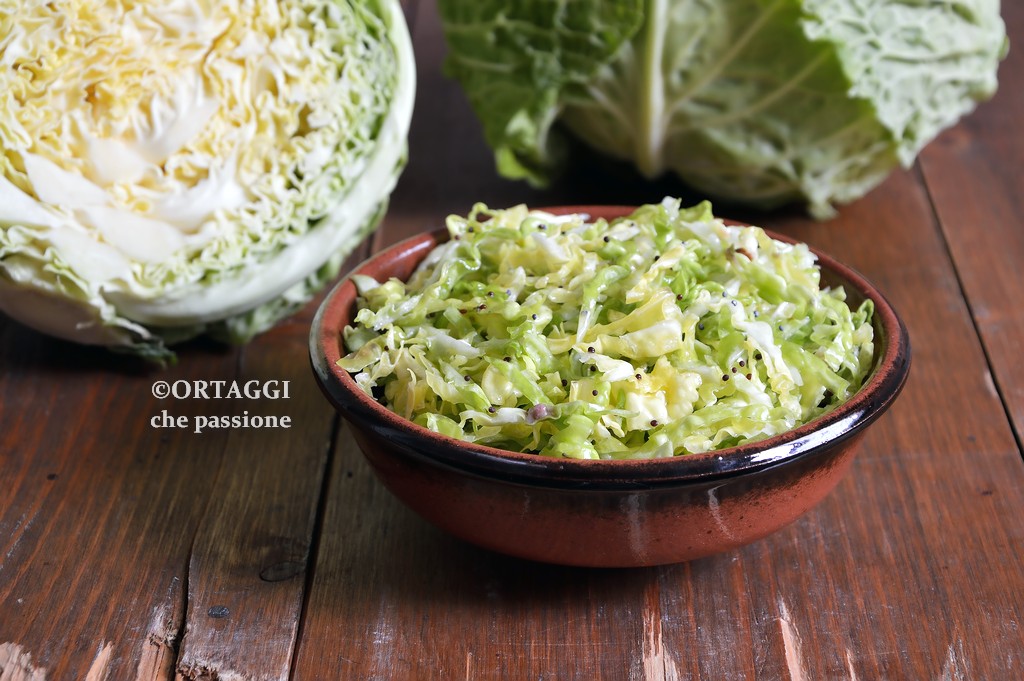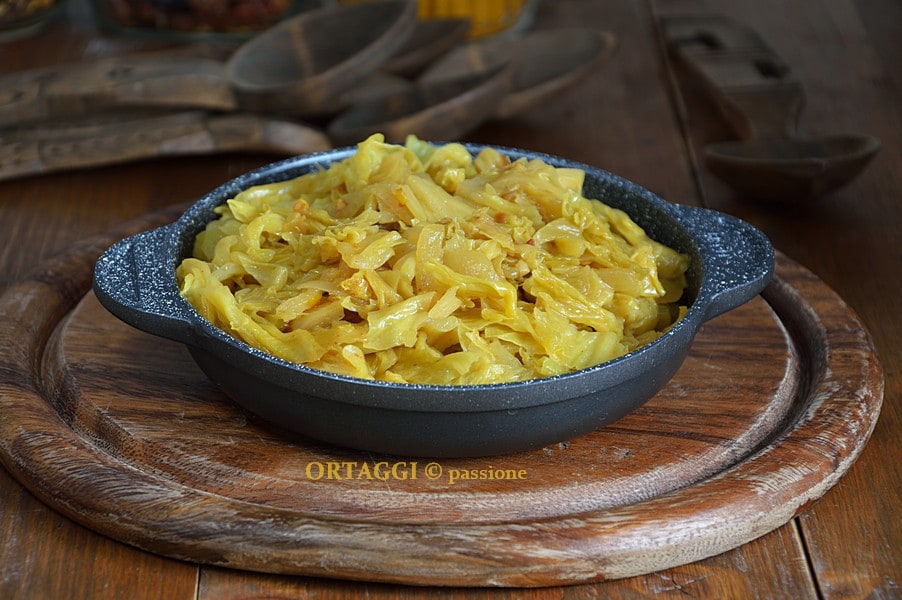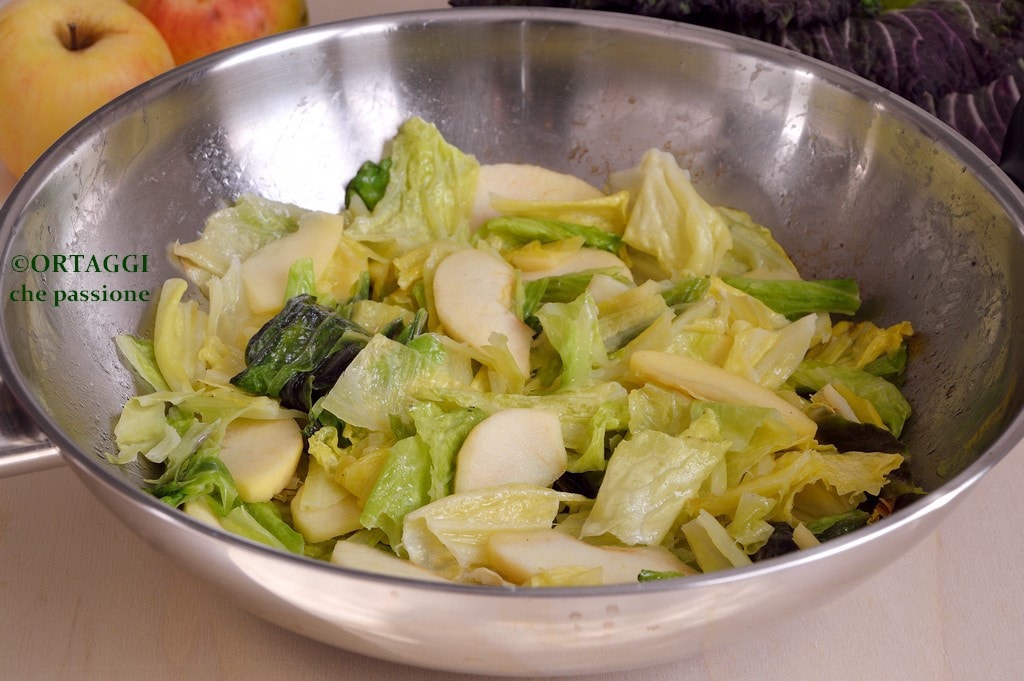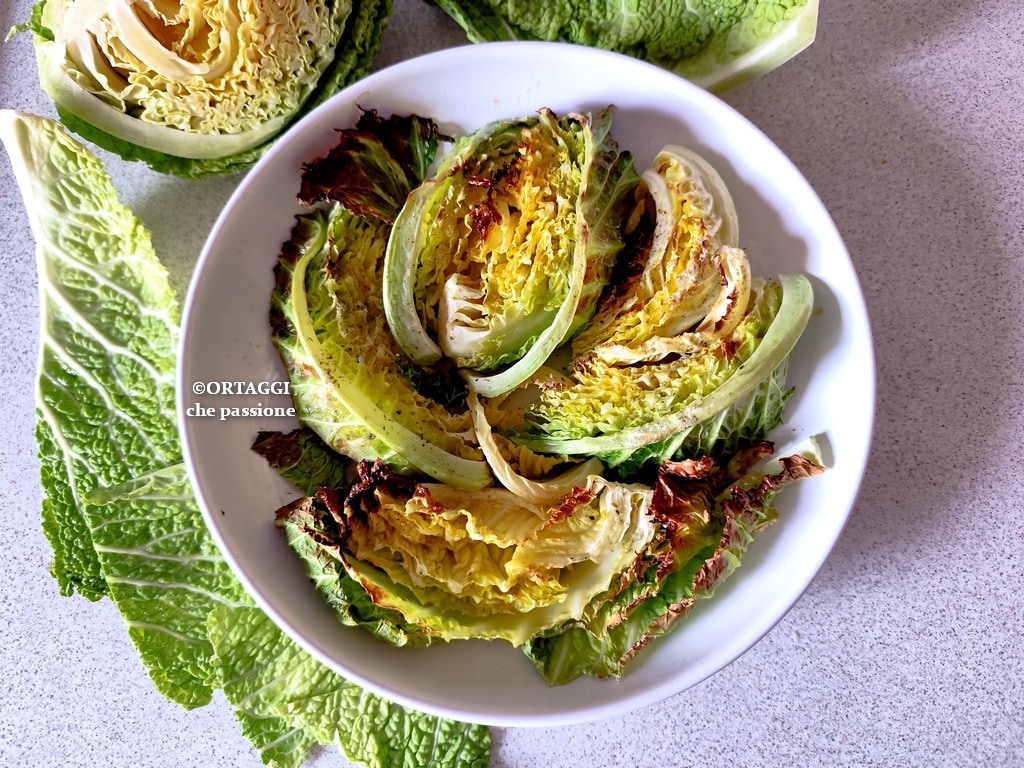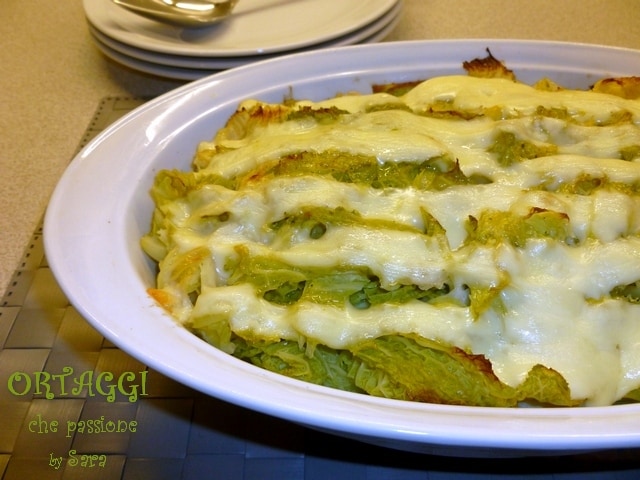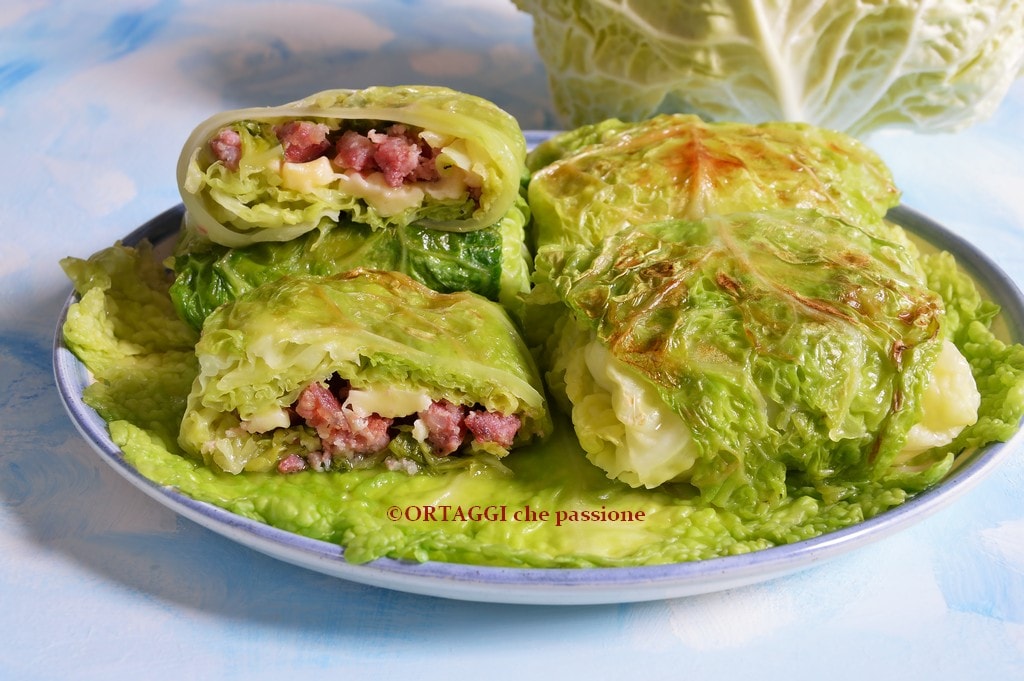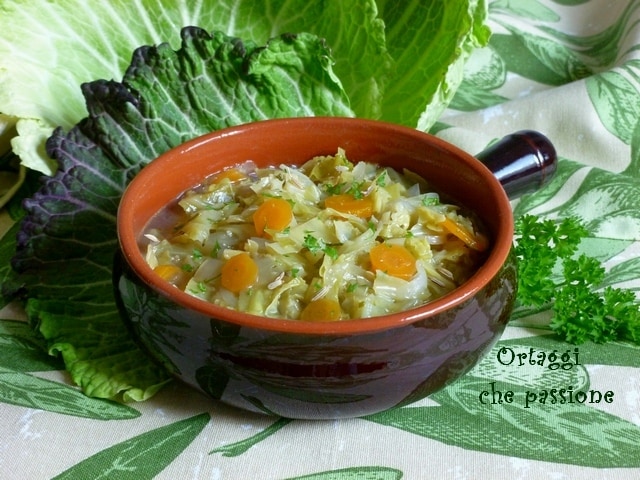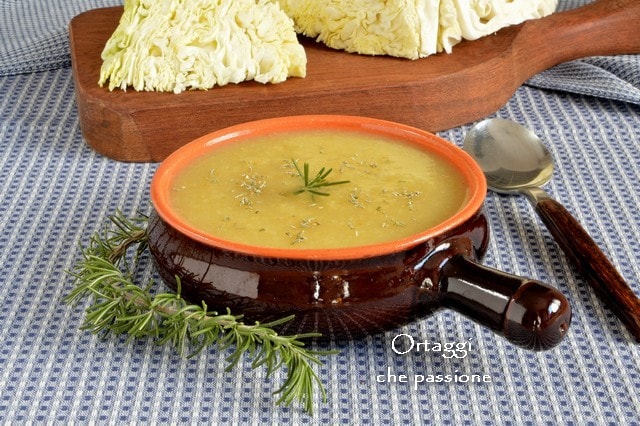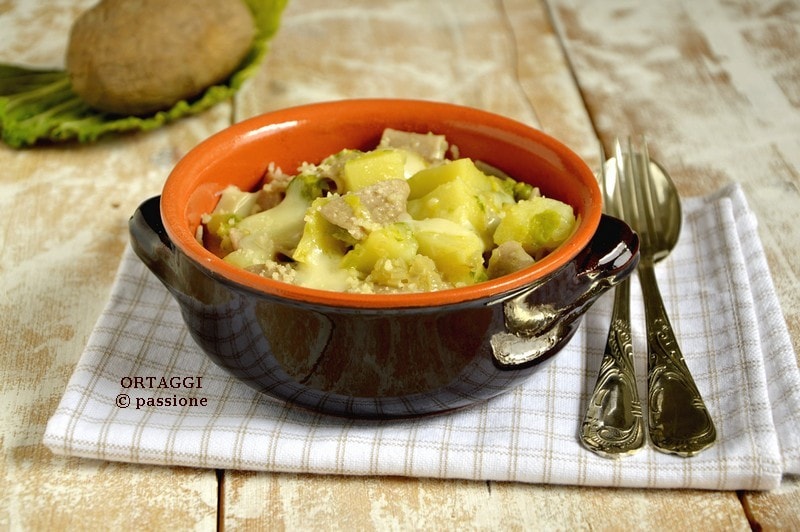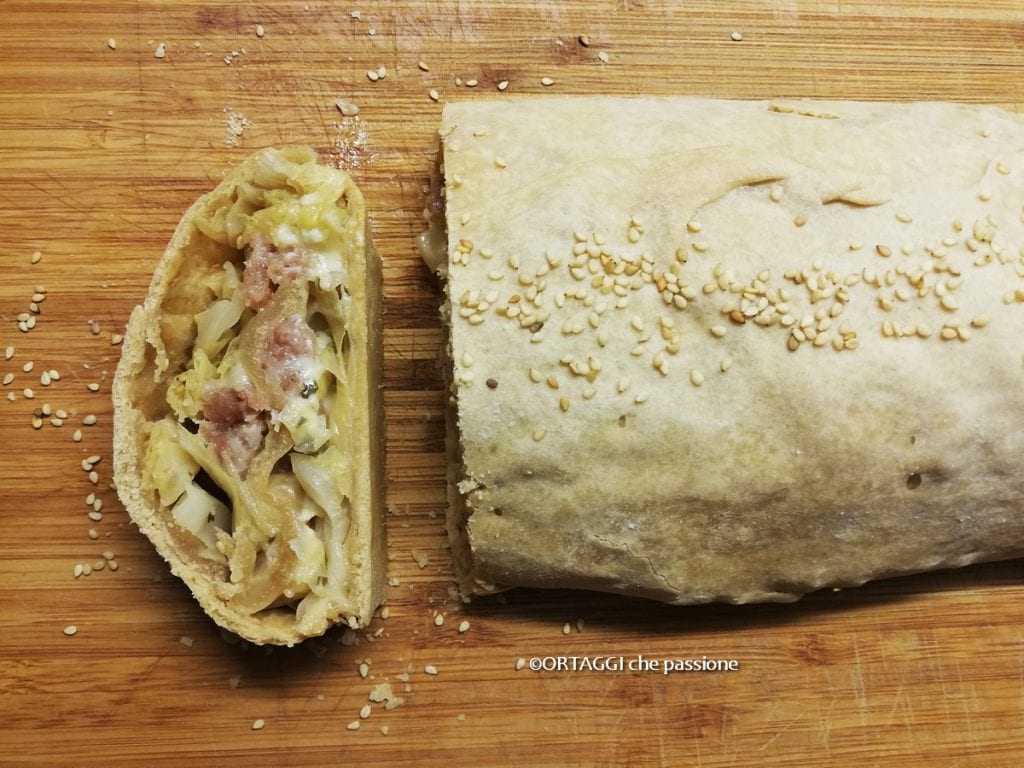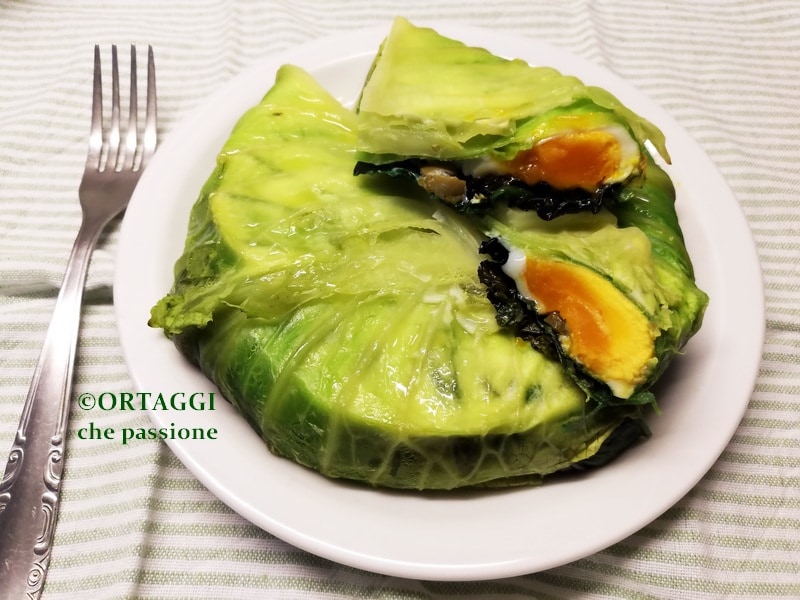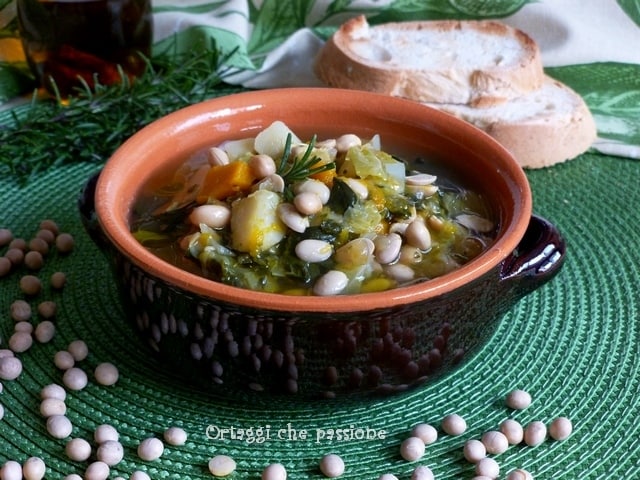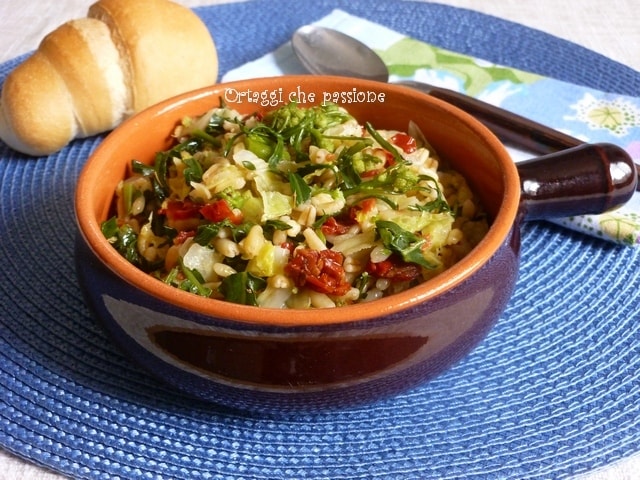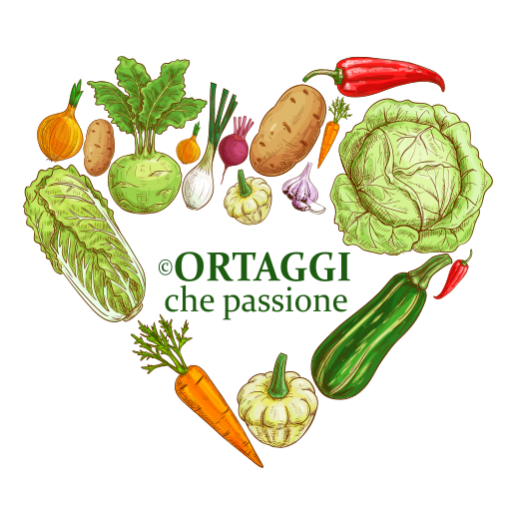Today I’ll explain how to cook cabbage in a tasty and quick way. Cabbage is delicious sautéed in a pan, stewed, baked au gratin, or stewed Pugliese style; it’s fresh and crispy when eaten raw, irresistible when prepared in a roll, and perfect in soups. Also good simply boiled. It is well-suited as a main dish, side dish, or even as an ingredient for first and second courses.
SEASONALITY of #cabbage – from September to April.
The best cabbages are those that have experienced a frost. There are also summer varieties that are sweet even before the cold.
Also called: Milan cabbage, Lombard cabbage, Savoy cabbage, common cabbage, little cabbage.
CULTIVATION
To cultivate cabbage, choose fertile, well-drained soil rich in organic matter. Plant seeds in a seedbed in late spring, transplant seedlings into open ground when they have about 4-6 leaves. Space plants at least 16 inches apart. Water regularly, keeping the soil moist but without waterlogging. Fertilize with nitrogen-rich fertilizer to promote growth. Check for pests and protect against attacks with natural methods or specific products. Harvest cabbage when the head is well-formed and compact.
RECIPES with red cabbage (red cabbage)
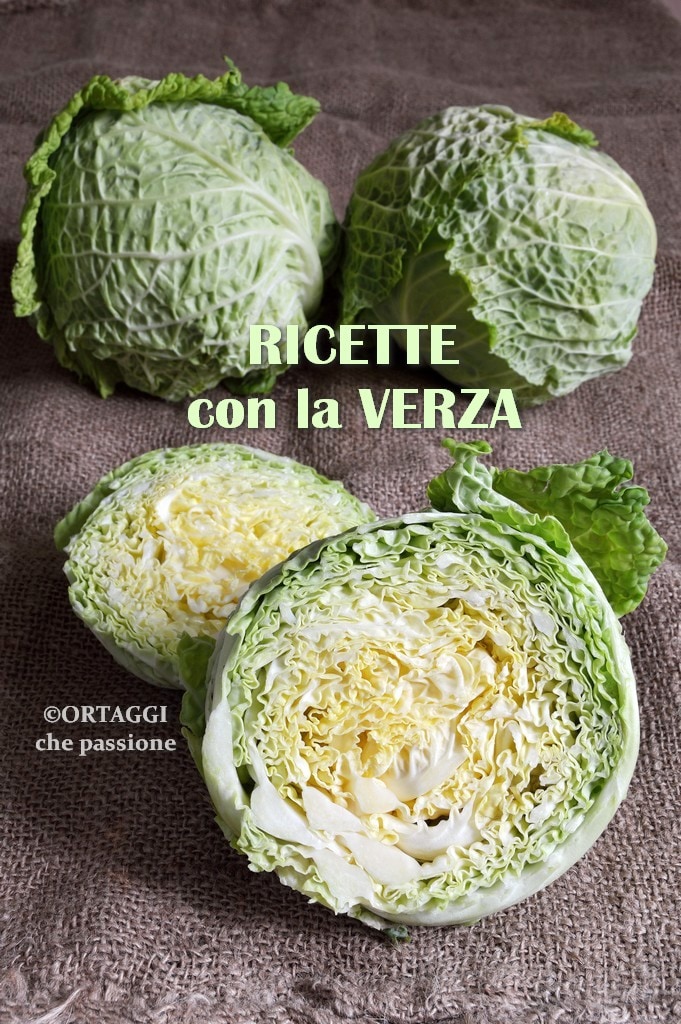
- Difficulty: Easy
- Cost: Economic
- Preparation time: 5 Minutes
- Portions: 1Piece
- Cooking methods: Stove, Steam cooking, Pressure cooker
- Cuisine: Healthy
- Seasonality: Autumn, Winter, and Spring
- Energy 27.00 (Kcal)
- Carbohydrates 6.10 (g) of which sugars 2.27 (g)
- Proteins 2.00 (g)
- Fat 0.10 (g) of which saturated 0.01 (g)of which unsaturated 0.06 (g)
- Fibers 3.10 (g)
- Sodium 28.00 (mg)
Indicative values for a portion of 100 g processed in an automated way starting from the nutritional information available on the CREA* and FoodData Central** databases. It is not food and / or nutritional advice.
* CREATES Food and Nutrition Research Center: https://www.crea.gov.it/alimenti-e-nutrizione https://www.alimentinutrizione.it ** U.S. Department of Agriculture, Agricultural Research Service. FoodData Central, 2019. https://fdc.nal.usda.gov
Boiled Cabbage
- 1 savoy cabbage
- as needed water
below the calories of 100 grams of savoy cabbage
Tools
- Pan high stainless steel
- Pressure Cooker 7 liters
Boiled Cabbage
– IN BOILING WATER: submerge cabbage leaves or pieces in salted and already hot water, cook for 10-15 minutes. This method disperses some nutrients in the cooking water.
– STEAMED: cook the cabbage with a steamer basket for 15-20 minutes. It is a gentler method that helps preserve vitamins and minerals.
– IN PRESSURE COOKER (or Instant Pot): cooking takes only 5-7 minutes, it is the fastest method. Just wash and cut the cabbage into pieces, add a glass of water at the bottom, place it in a steamer basket, and close the lid. This method preserves nutrients and flavor.– Season with a drizzle of extra virgin olive oil and salt for a simple and light flavor.
– Add a bit of lemon juice or balsamic vinegar for freshness and acidity.
– For a richer flavor, combine minced garlic and chili pepper (or herbs), sautéing everything in the pan for a few minutes.
– Mix the cabbage with toasted sesame seeds and soy sauce for an oriental taste.
– Enrich the dish with nuts or chopped almonds and grated cheese for added crunchiness and flavor.
– Arugula Pesto: blend arugula, nuts (cashews, almonds, walnuts, hazelnuts, pine nuts, pistachios), garlic, and vegan parmesan with olive oil and water to create a liquid pesto to mix with the cabbage.
– Tahini Sauce: mix tahini, lemon juice, garlic, and water to get a creamy sauce to pour over the cabbage.
– Cherry Tomatoes and Olives: add fresh halved cherry tomatoes and pitted black olives for a Mediterranean touch. Season with oil, salt, and oregano.
– Melted Cheese: melt some cheese (like gorgonzola or taleggio) and pour it over hot cabbage for a delicious and creamy dish.
– Yogurt Sauce: mix natural yogurt with chopped fresh herbs (like basil, mint, or parsley) and salt. This sauce is light and fresh.
– Caramelized Onion: cook onions in a pan until sweet and soft, then add to the cabbage for a contrast of flavors.
– Mustard and Honey Sauce: combine mustard, honey, and a bit of vinegar for a sweet and spicy sauce to pour over the cabbage.
Storing Cooked Cabbage
To store boiled cabbage, let it cool, place it in an airtight container, and refrigerate. It keeps for up to 3 days.
Storing Raw Cabbage
Cabbage keeps very well in the fridge, staying fresh for up to 10 days. Before storing it in the fridge’s vegetable drawer, remove any damaged leaves.
FAQ (Frequently Asked Questions)
What is the difference between Savoy cabbage and regular cabbage?
Savoy cabbage and regular cabbage are two varieties of cabbage but have different characteristics. Regular cabbage has smooth, compact leaves, usually light green or purple. Savoy cabbage, on the other hand, has crinkled, wavy, and thicker leaves, darker green. In terms of flavor, regular cabbage is more delicate, while Savoy cabbage has a stronger taste. Regular cabbage is ideal for salads and sauerkraut, while Savoy cabbage is more suitable for hearty winter dishes.
How to eat cabbage raw or cooked?
Cabbage can be eaten raw or cooked. When raw, thinly slice the leaves and add them to salads for a crunchy and slightly spicy touch. When cooked, cabbage can be stewed, boiled, sautéed in a pan, or used in soups and stews. Cooking makes its flavor sweeter and its texture softer. In any case, wash the leaves well before use.
What can cabbage be eaten with?
Cabbage can be paired with many dishes. Use it to prepare rolls, filling them with meat or vegetables. Add it to bean soups to make them richer and more flavorful. Sauté it in a pan with garlic and oil for a simple and tasty side dish. Mix it with potatoes and sausage for a hearty main dish. Even raw, it can be added to salads. Cabbage pairs well with strong flavors like bacon, aged cheeses, or spices like cumin.
What are the health benefits of eating cabbage?
According to nutritionist Dr. Zampella: “Cabbage is a vegetable belonging to the Brassicaceae (or Cruciferae) family. Nutritionally, it is a low-calorie vegetable (100 g provides just over 25 kcal). It is rich in water, potassium, vitamins, particularly A, C, K, and has good fiber content (elements that give it a good satiating power), low in sodium, favoring diuretic action. The nutritional characteristics of cabbage confer a series of health benefits: it stimulates intestinal activity thanks to the presence of fiber, has antioxidant action protecting against free radicals, and has anti-cancer action due to the presence of glucosinolates, in particular, isothiocyanates. It is precisely the presence of isothiocyanates that makes this vegetable not appreciated for its smell! These compounds contain sulfur and are responsible for the characteristic odor released during cooking. The presence of vitamin K makes it contraindicated for people on anticoagulant therapy, as it could interfere with the action of these drugs.“
Can people with high cholesterol eat cabbage?
People with high cholesterol can safely eat cabbage, as it is rich in fiber, vitamins, and antioxidants. It helps to lower bad cholesterol (LDL) thanks to its soluble fiber content, which promotes the elimination of fats. Including cabbage in a balanced diet can be useful for improving cholesterol levels.
When should you avoid eating cabbage?
Cooked cabbage can be difficult to digest for some people, especially for those with gastrointestinal issues like irritable bowel, gastritis, or stomach acidity. Being high in fiber, it can cause bloating and flatulence. People with thyroid problems should also limit its consumption, as cabbages contain substances that can interfere with iodine absorption. In these cases, consult a doctor before including cabbage in the diet.
Typical regional dishes with cabbage
Cassoeula (Lombardy), cabbage Parmigiana (Campania), stewed cabbage (Sancrau of Liguria), capunet (cabbage rolls filled with meat, also known as pèss-còj from Piedmont), Triestine minestrone (Jota of Friuli Venezia Giulia), pizzoccheri (Lombardy), Tuscan ribollita (along with black cabbage), verze sofegae (Veneto), Valpelline soup from Valle d’Aosta (Seupa a la valpellinentze from Valle d’Aosta), Canavese soup (Piedmont), bread and cabbage soup (supa ’d pan e còj from Piedmont).

